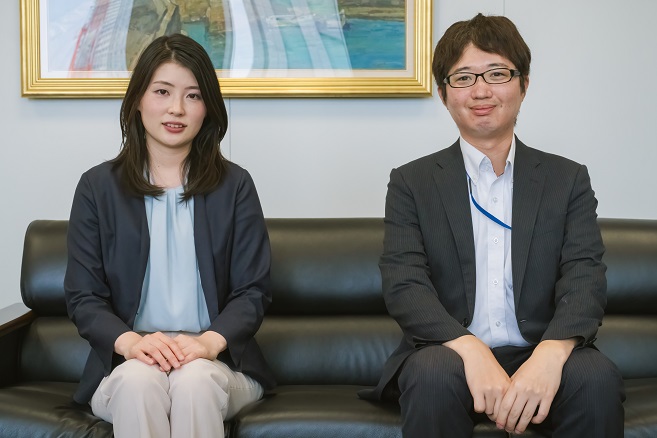The area around Hokkaido's Shin-Sapporo Station has been in the limelight recently. At the center of Atsubetsu Ward in Sapporo's suburbs, this area combines abundant greenery and convenience, offers both subway and JR stations, and is only a 9-minute express train ride to Sapporo Station and a 30-minute ride to New Chitose Airport. Planned as a subcenter of Sapporo, the area around the station is undergoing large-scale development and becoming a new smart city. The neighboring Kitahiroshima City plans to open a new baseball stadium in 2023, which is expected to increase future activity in the area.
Development is divided into two areas, G and I, beginning with universities and vocational schools opening in G Area. Larger-scale development is scheduled for I Area, with a medical center opening in July 2022 and plans to open hotels, high-rise condominiums, commercial facilities, parks, and an energy center in 2023, all of which will be connected by covered walkways for easy access between each building, regardless of the weather or season.
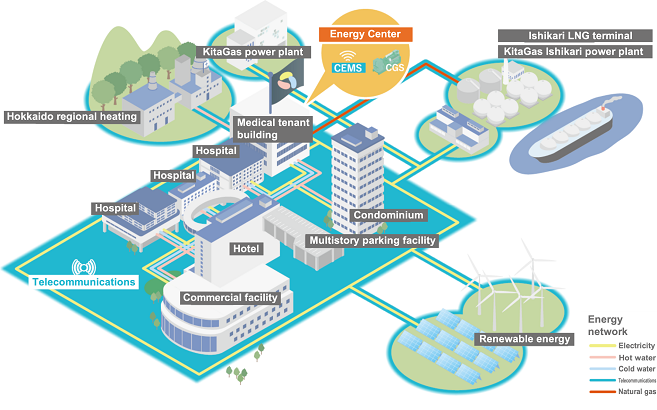
Shin-Sapporo Station Area's Vision for the Future
Source: Hokkaido Gas Co., Ltd., Shin-Sapporo Energy Center, "The Area Around Shin-Sapporo Station"
Development will focus on a disaster-resilient smart city with a low carbon footprint. The concept will be supported by the Shin-Sapporo Energy Center, which will supply the electricity and heat for the entire area. Hokkaido Gas Co., Ltd. (hereinafter "KitaGas") won the competitive bid to supply the energy for this project and is tasked with designing, constructing, and operating this center.
KitaGas Mr. Shingo Hagino (Energy System Division, Energy System Group Chief) has been involved with the construction of the Shin-Sapporo Energy Center since the beginning, overseeing the technical aspects and managing system design and construction. He had this to say about why KitaGas was selected. "We proposed building a low-carbon, disaster resilient system using Natural Gas CGS (Co-Generation System) and CEMS (Community Energy Management System). Sapporo City has positioned the development around the Shin-Sapporo area as a leading project for the city's development strategy and energy vision. The project began in earnest in 2018, but a series of typhoons across Japan and the magnitude 7 Hokkaido Eastern Iburi earthquake in September that caused blackouts to approximately 2.95 million homes across Hokkaido reaffirmed the importance of focusing on natural disaster countermeasures. The city naturally wanted future developments to have a low carbon footprint, but its vision also placed a strong emphasis on resilience and our proposal brought those two concepts together.
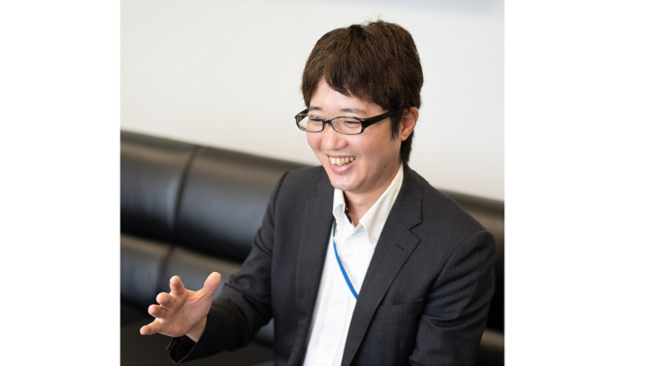
Shingo Hagino,
Hokkaido Gas Co., Ltd.,
Energy System Division, Energy System Group Chief
CGS is an energy system that uses natural gas (city gas) as a fuel to obtain power while simultaneously extracting hot water and steam from exhaust for hot water supplies and air conditioning. There is no transmission loss because power is generated as a distributed power source in the consuming region. It is also approximately twice as energy efficient as conventional thermal power generation systems that do not utilize exhaust and can use between 70 to 95% of the primary energy input into the system. This system is particularly effective at reducing CO2 emissions because it combines the efficient use of exhaust with the low CO2 emissions of natural gas.
Mr. Hagino also noted that "The Shin-Sapporo Energy Center CGS can meet 60% of the power and 45% of the hot and cold water needs during peak demand for the entire area during normal operations. It is connected to the power grid to receive the remaining power from the grid and receives hot water from Hokkaido District Heating Co., Ltd. to create heat in order to diversify energy sources. Also, if power from the grid is interrupted during a disaster, we can provide a steady supply of heat and power to local facilities so long as we're receiving city gas, so hospitals can operate and people can stay in their condominiums without needing to evacuate."
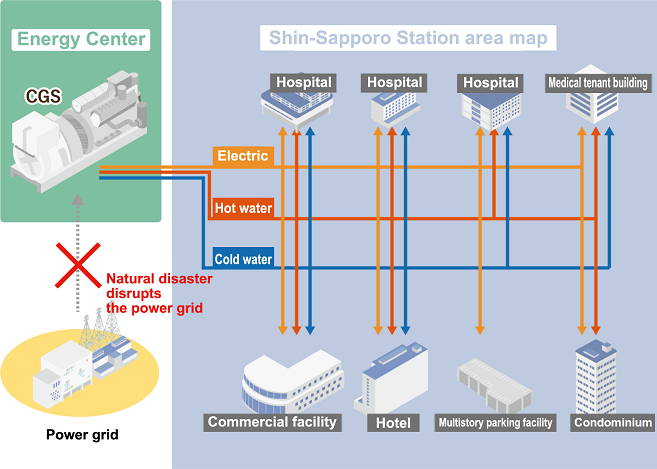
Ensuring a steady supply of power and energy during natural disasters
Source: Hokkaido Gas Co., Ltd., Shin-Sapporo Energy Center, "Natural Disaster Countermeasures"
KitaGas uses earthquake-resistant pipes for gas and heat. Their gas generation and supply facilities were not severely damaged during the Hokkaido Eastern Iburi earthquake and CGS similar to the Energy Center continuously generated energy and helped provide a steady supply of energy to temporary emergency shelters.
The Shin-Sapporo Energy Center chose CGS from the Hitachi Group. KitaGas frequently uses CGS when constructing energy distribution networks that employ CGS, but this is their first time working with the Hitachi Group. Tomoyuki Nakanishi (Social Systems Sales Department 1, Energy System Group) manages the Hitachi Hokkaido Branch and had this to say about the process leading up to the order. "The first order is a significant obstacle to overcome, but we worked very hard to get KitaGas’s understanding on the quality of our finished goods by creating opportunities for them to do things like visit sites of customers who use Hitachi Group CGS. We also worked with Hitachi Power Solutions who oversees manufacturing and maintenance to bolster our maintenance systems in the Sapporo area and creates an environment where they could use our services without concern while also offering proposals that provided 30-year worry-free maintenance and use. Ultimately, I believe that they saw value in our exceptional performance that combines power and heat generation capabilities and our IoT (Internet of Things) predictive diagnosis service that uses operational data.
Mr. Hagino noted two key unique aspects of the Hitachi proposal. "First, they liked that the gas engines are compatible with a wide range of fuels and were particularly impressed with the ability to co-fire renewable energy biogas and next-generation energy hydrogen sources. Other CGS they've used in the past did not have the IoT predictive diagnosis function and they have high expectations for how they can use such data."
IoT predictive diagnosis is a system that uses Hitachi's original HiPAMPS predicative diagnosis system, which has access to all the information the Hitachi Group has accumulated over its many years of manufacturing and operating factories, civil infrastructure, and more. Each section of the CGS is equipped with multiple sensors that collect data on temperature, pressure, and other information, which is then analyzed to a high degree of accuracy using data mining that employs machine learning technology to detect changes in their early stages. Collecting data to understand equipment status lowers costs by allowing users to switch from TBM (Time Based Maintenance) that replaces parts based primarily on operating hours to CBM (Condition Based Maintenance) where maintenance is a carried out based on the actual condition of equipment. Using data to understand equipment conditions also helps prevent sudden failures.
"Especially since it supplies energy to medical facilities and homes, the Shin-Sapporo Energy Center cannot experience downtime. We are installing two 1,271 kW CGS (JMS420) so that it can continue generating power during maintenance periods and will combine predicative diagnosis with remote monitoring via the Hitachi Power Solutions Onuma Works and Remote Monitoring Center in Hitachi City, Ibaraki to prevent outages caused by accidents. (Nakanishi)
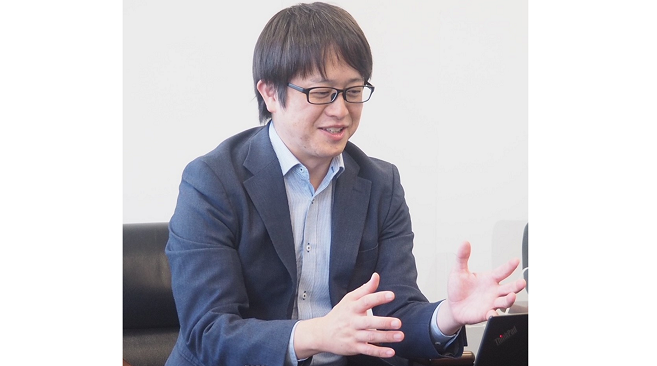
Tomoyuki Nakanishi,
Hitachi Hokkaido Branch,
Social Systems Sales Department 1, Energy System Group
Another feature of the Shin-Sapporo Energy Center is how it will use CEMS to efficiently manage energy for the entire area. "The entire area will see reduced energy use because we will understand the energy use of each facility and residence in real time and then use AI (artificial intelligence) to reflect that use in controls at the Energy Center."
Such is the role that CEMS will serve according to Ms. Eri Fukaura (Energy System Division, Energy System Group Director), who is involved in development at KitaGas.
Newly developed CEMS also has three unique functions. "The first is "auto-tuning", which saves energy on the supply side by monitoring the efficiency of the entire system at the Energy Center. If it detects a drop in efficiency, it analyzes the cause and automatically changes the value set for that piece of equipment. The second is "auto demand response", which saves energy on the demand side by having the CEMS maintain an appropriate air conditioning temperature in the areas for each facility (hospital, hotel, commercial facilities) without inconveniencing customers. The third is "user-participatory energy management," which aims to maintain temperatures that reduce energy use by supplying the people who use a facility with a QR code or other method for accessing a short survey about their comfort, then using those survey results to adjust the automatic demand response temperature setting for large numbers of people. And if we anticipate that energy demand will exceed threshold, we created a feature where we can ask every facility - including residences - to save electricity and then award points for energy savings." (Ms.Fukaura)
These features are planned to increase operational accuracy by collecting data during operations, having technicians analyze that data, verify their results, and then reflecting those results in setting values.

Eri Fukaura,
Hokkaido Gas Co., Ltd.,
Energy System Division, Energy System Group Director
The Shin-Sapporo Energy Center began operating on June 1, 2022, ahead of other facilities in I Area. Full-scale operation of the system is yet to come and a number of people in Hokkaido and beyond are already watching its performance closely. Ms. Fukaura spoke about the special attention this system is receiving as an effective model for the spread of renewable energy sources that can have unstable energy generation output, since this system receives surplus power like renewable energy from the grid and stores it as heat instead of in a battery.
"I'm really surprised that we've already received 500 visitors from around Japan after only operating for 2.5 months. So far our visitors have mostly come from businesses and local governments, but I'd like the general population and especially children to visit us in the future. That's why we're creating an exhibition space with videos, models, and informational panels for visitors and have created some spaces where visitors can see real equipment operating while learning about how energy is used. We hope that the Energy Center will get people interested in energy while also helping them learn about KitaGas."
The Shin-Sapporo Energy Center website has a reservation function for public tours and they plan to add more informational features such as educational information for children and information on the amount of energy produced and the hot and cold water it supplies.
Ms. Fukaura is also developing an app that will let residents of the high-rise condominium scheduled to open in July 2023 see their energy use. "We're exploring ways to encourage behavioral changes that reduce residential electricity use, such as adding demand response features, incorporating services that reward energy savings with points both during normal operations and during times of limited energy supply, and providing coupons so that people will use commercial facilities."
The Energy Center will undoubtedly receive even more attention if they can create a model that both reduces energy and creates a more vibrant public space.
Among the substantial changes to the environment and energy under the global drive toward a decarbonized society, KitaGas is working to create a low-energy, low-carbon, and resilient diversified energy society by using CEMS to optimize control supply and demand while combining distributed power sources like CGS that effectively use exhaust and renewable energy with other initiatives such as their Home-Generated Gas initiative.
Alongside this, the Hitachi Group's 2024 Mid-term Management Plan promotes ideas like "planetary boundary" and "well-being". With Hitachi’s Social Innovation Business that uses data and technology, Hitachi will contribute towards the creation of a sustainable society where each and every person can thrive while still protecting the world. This Hitachi Group vision converges in the concept behind the Shin-Sapporo Station, which aims to create a town where people can lead active lives with reduced energy use and a low carbon footprint.
"In that way, working on this project by offering CGS is extremely significant and I'm extremely pleased that it will act as a catalyst to further solidify this Collaborative Creation geared toward the KitaGas goal of creating a diversified energy society for future generations. And on a broader scale, Sapporo is not the only city facing issues involving disaster countermeasures and optimizing the energy demand balance while working towards decarbonization. The experience we gain here will help other regions facing these same issues." (Nakanishi)
Construction for I Area is proceeding rapidly to meet the anticipated 2023 opening and the town will start to take shape once everything is complete. The Shin-Sapporo Energy Center will continue amassing a wealth of knowledge and is expected to continue evolving.
"This is our first time introducing initiatives that work to bring customers and suppliers together to increase the energy efficiency of an entire town. We won't stop with the installation of CGS and CEMS, but will offer new value to our customers by showing them how much energy savings and carbon reductions they can achieve while working together to achieve a decarbonized society. We want to make the Shin-Sapporo Energy Center a model of how to accomplish that idea and offer that combined knowledge and understanding to other areas around Hokkaido." (Ms. Fukaura)
"I was born and raised in Hokkaido, but I lived in Osaka for six years in college and was surprised at how cold my room was in winter. In Hokkaido, our rooms are so warm in winter that we can wear t-shirts comfortably. But it would be fair to say that that is wasting energy. So, I think about what kind of infrastructure is needed to reduce energy use while maintaining comfort. My goal is to use digital technologies to further advance the use of CGS and develop methods for new infrastructure." (Mr. Hagino)
The Hitachi Group will contribute to work with KitaGas as it aims to become a resourceful and robust energy company.
